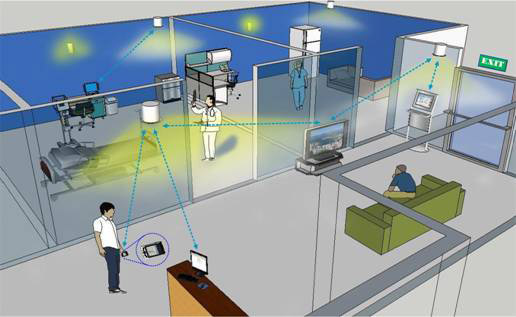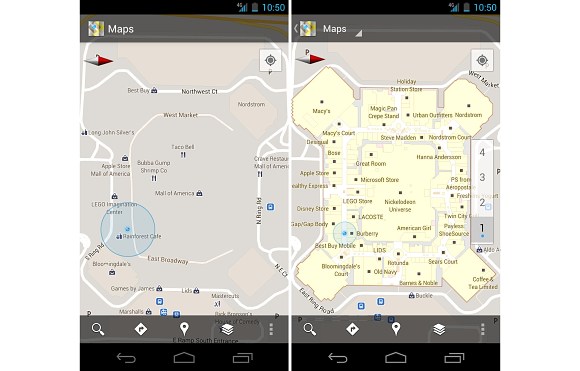
Once the domain of only military pilots and smartbombs, the Global Positioning Satellite (GPS) system has now proliferated its way into every facet of our modern lives. From Facebook statuses, sat nav in car dashboards to geo-tagged photos taken with your digital camera you probably use GPS at least once a day even if you aren’t fully aware of it. But as accurate and ubiquitous as GPS is, there are some serious drawbacks to its use: it can’t be used indoors, it can’t be used as a precision measuring tool and it is unidirectional. So let’s talk about Indoor Positioning Systems.
Indoor Positioning Systems work in a similar way to GPS – IPS devices need to be able to “see” at least three IPS transmitters of known locale in order to accurately pinpoint their position, but once triangulated, your position can be detected far more reliably than the GPS (capable of accuracy of between 10m-25m). As IPS technology improves, it isn’t outlandish to consider losing your car keys, and simply asking your house to detect your IPS-enabled key fob and guide you straight to it via your smartphone.
Google (who are back in my good books again after finally sorting out my year-long AdSense nightmare) are already hard at work mapping all sorts of places across the globe. For UK readers, you might be happy to hear that London City, London Stansted, London Luton, Manchester, Edinburgh, Glasgow and Birmingham Airports are all mapped inside for use with Google Indoor Maps. Besides the airports, you can find many other department stores, theaters, museums and railway stations are also mapped. There’s a full list here.

Indoor Positioning Systems and the Buildings of the Future
The construction industry hasn’t changed for thousands of years, while almost every other industry has used the incredible technological advancements this past century to dramatically improve materials, efficiency and techniques.
In the very near future, as IPS sensors become more prevalent in things like car-key fobs and smartphones, I predict we will see them become a standard part of new buildings. Like wall sockets and lights. That way your house can start tracking where you are, what you do and when you do it. Computers are pretty good at pattern matching, so as the winter nights draw in, your house can fire up the heating in your entrance and reception rooms so it’s warm just as you walk in the door from work.
And it wouldn’t be in any kind of Big Brother way – the data wouldn’t ever leave your control or even your house. It would be used for things like improving the way your house operates, is heated, is lit, etc. It would save you money. That’s great news for you.
That’s my prediction for fixed-position IPS transmitters, but where things get exciting is the use of mobile IPS and how they could help build your house in the first place.
I recently started a job developing software for the construction industry, and frankly the main thing I’ve developed so far is a new-found respect for the architects, engineers, planners, surveyors and contractors who all must work in supreme harmony in order to build the buildings we take for granted. Your house, not so complicated, but a £100 million hospital complex? You try designing the plumbing, heating, electrical and air-conditioning systems for hundreds of rooms across several floors, in such a way that doesn’t impede the steel structure or the architectural elements of the building.
It can take years.
Decades, even.
And once it’s planned and designed and signed off, you still have to hand over the designs to the builders, plumbers and sparkies who must follow the plans to a T. Any deviations and your years of designing goes down the slightly-out-of-place toilet. But IPS can help.
Once IPS sensors are set up around the perimeter of the building site, builders can use their smartphones, iPads and maybe even night-vision-goggle-style head cameras to project augmented-reality views of their part of the yet-to-be-built building on the screens and ensure everything they’re doing is millimetre-perfect.
The future of buildings is Smart Buildings. The future of building Smart Buildings is augmented reality, IPS and collaborative-design. It should mean that building costs come down, everybody involved enjoys a shared view of what needs building, and you don’t have anywhere near as much wastage, or disagreements, or redesigns, or issues, etc. It should just “work”. Every time. That’s great news for everyone involved in construction.
But it all starts with the software. The collaborative design software, the document sharing and editing software, and the augmented reality smartphone/iPad/head-goggles software. It all needs written.
And that’s great news for me!
